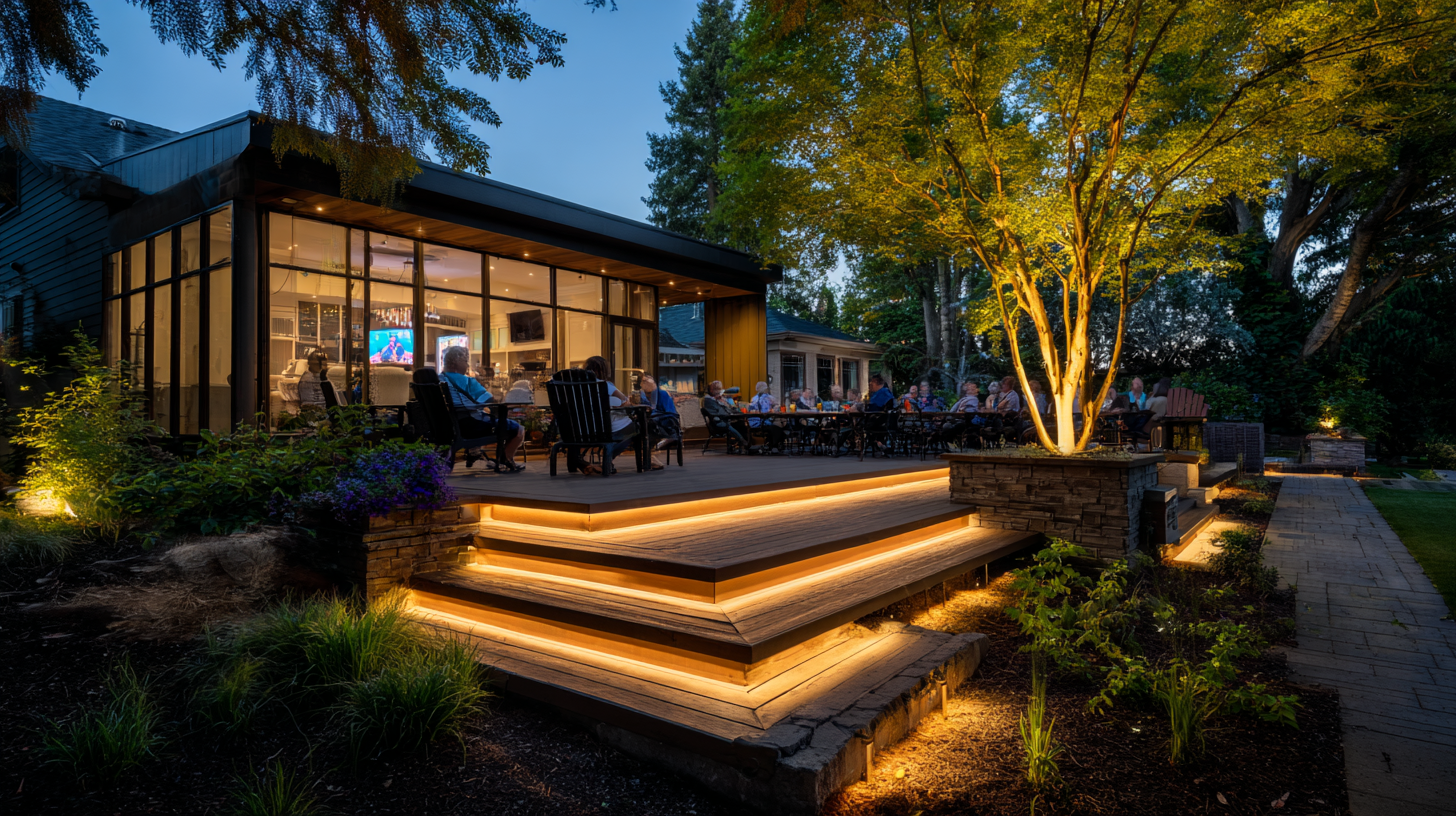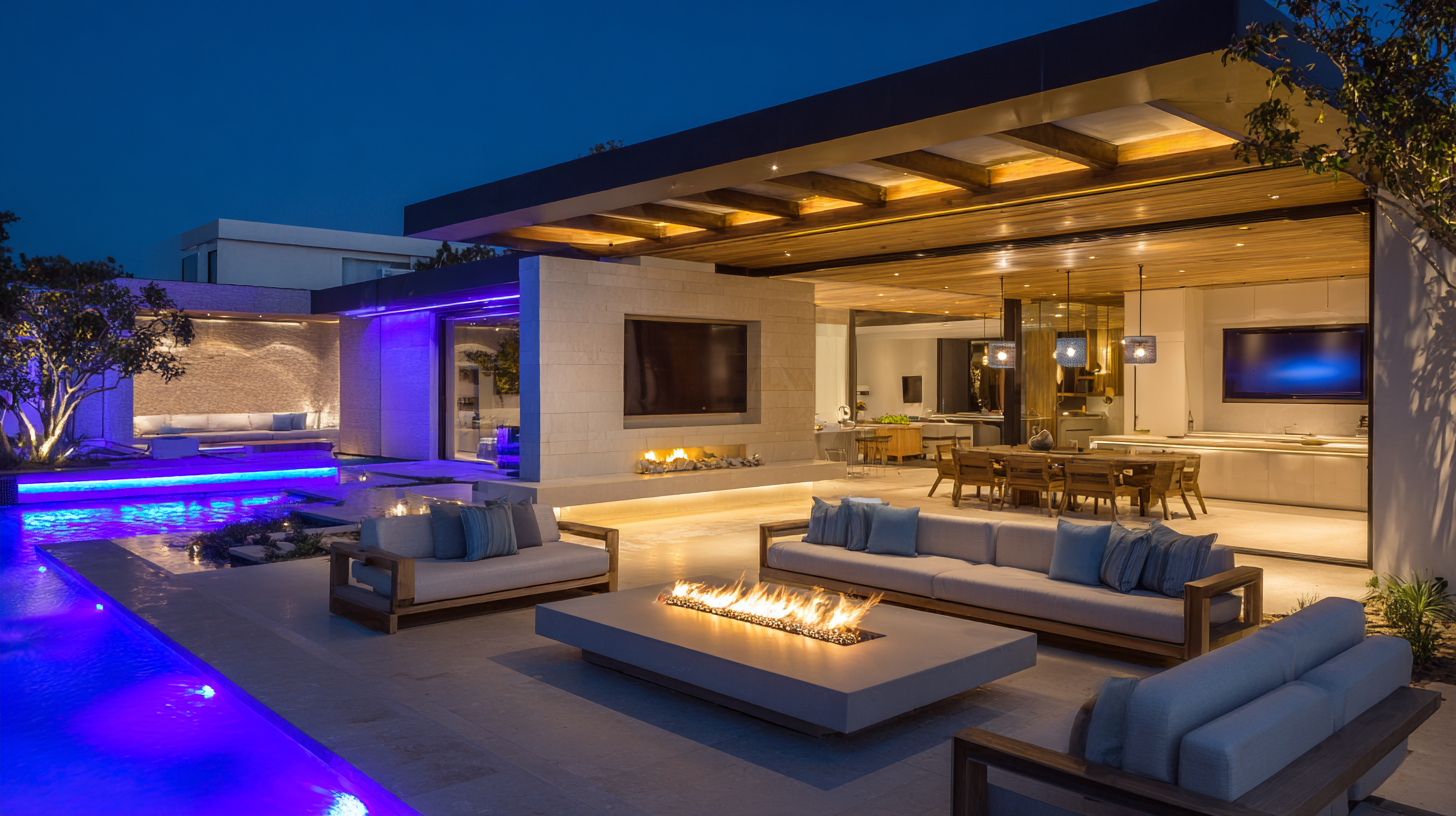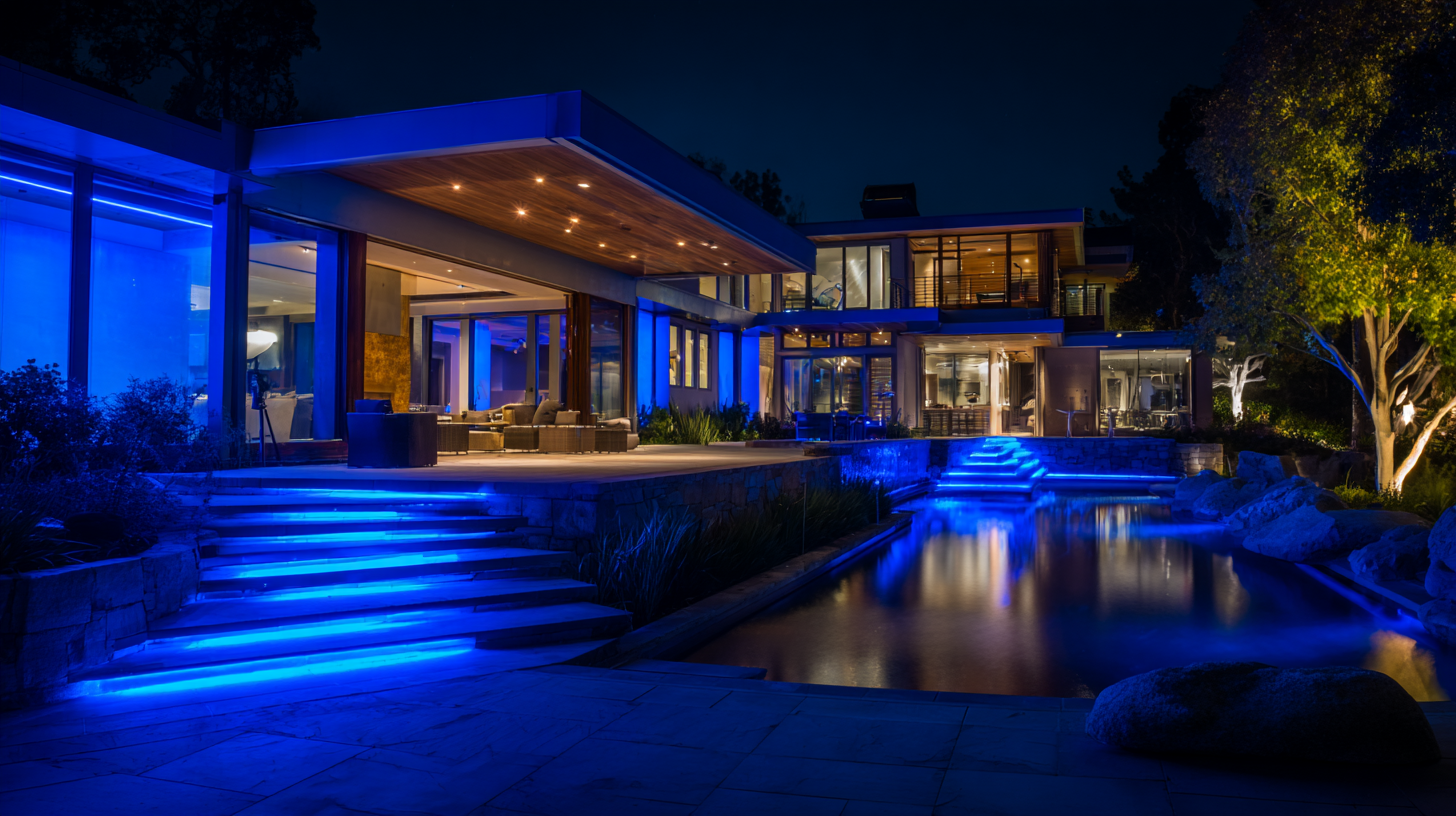The Future of Outdoor Led Light Innovations and Their Impact on Modern Living
The rapid evolution of technology has ushered in a new era for outdoor spaces, with Outdoor LED Light innovations leading the way in enhancing both aesthetics and functionality. According to a 2022 report by the Lighting Research Center, outdoor LED lighting can reduce energy consumption by up to 75% compared to traditional lighting methods, offering significant savings for municipalities and homeowners alike. Furthermore, the global outdoor LED lighting market is projected to reach $30 billion by 2027, driven by increasing urbanization and a heightened focus on sustainability. As outdoor LED technology continues to advance, improvements in efficiency, durability, and smart integration are expected to revolutionize modern living spaces, transforming how we interact with our environment after dark. This blog will explore the latest advancements in Outdoor LED Light technologies, comparing their features and benefits to traditional lighting solutions, while examining their profound impact on contemporary lifestyles.

Innovative Designs in Outdoor LED Lighting: Trends Shaping Modern Aesthetics
As outdoor LED lighting continues to evolve, innovative designs are transforming modern aesthetics and redefining our outdoor spaces. According to a recent report by Market Research Future, the global outdoor LED lighting market is expected to reach $20.1 billion by 2025, driven by technological advancements and a growing emphasis on energy efficiency. This surge is prompting designers to embrace creative forms and applications, from architecturally integrated fixtures to smart lighting solutions that enhance both function and beauty.
Trends in outdoor LED lighting are increasingly focusing on versatility and sustainability. For instance, products featuring adjustable color temperatures and smart connectivity not only boost ambiance but also allow users to tailor their lighting to suit specific occasions. Furthermore, a study published by the U.S. Department of Energy indicates that adopting LED lighting can lead to energy savings of up to 75% compared to traditional incandescent bulbs. As homeowners and businesses become more eco-conscious, the integration of stylish yet sustainable outdoor lighting solutions is essential in shaping modern living environments while reflecting current design trends.

Energy Efficiency of Outdoor LED Lights: Saving Costs and Reducing Carbon Footprint
As outdoor lighting technology advances, the emergence of LED (Light Emitting Diode) lights has revolutionized not only aesthetics but also energy efficiency. These innovative fixtures consume far less electricity compared to their incandescent or halogen counterparts, leading to substantial cost savings on energy bills. In fact, switching to LED lights can reduce energy usage by up to 80%, which is a remarkable benefit for both residential and commercial settings. This decrease in energy consumption directly correlates with a lower carbon footprint, making LED lighting an environmentally friendly choice.
Tip: When selecting outdoor LED lights, look for products with an Energy Star certification to ensure optimal efficiency and performance. Additionally, consider smart lighting systems that offer automation features, allowing you to control lighting schedules and intensity, further maximizing energy savings.
Moreover, the longevity of LED lights is another critical aspect contributing to their sustainability. These fixtures can last up to 25 times longer than traditional bulbs, meaning fewer replacements and less waste in landfills. Transitioning to durable outdoor LED options not only enhances the visual aspect of your space but also contributes to a greener planet.
Tip: To get the most out of your investment, install LED lights in areas where they provide the greatest impact, such as pathways, gardens, and entranceways, ensuring safety and ambiance while promoting energy efficiency.
The Impact of Outdoor LED Lights on Energy Efficiency
This chart illustrates the annual energy consumption of various types of outdoor lighting options. As shown, LED lights consume significantly less energy compared to traditional incandescent and halogen bulbs, emphasizing their role in enhancing energy efficiency and reducing costs in modern living.
Smart Outdoor Lighting: Integration with IoT for Enhanced Control and Convenience
The advent of IoT technology is revolutionizing the outdoor lighting landscape, enabling enhanced control and convenience for homeowners and urban planners alike. According to a report by MarketsandMarkets, the smart lighting market is expected to reach $63.5 billion by 2026, with a significant portion driven by outdoor applications. Smart outdoor lighting systems, equipped with sensors and connectivity options, allow users to manage their lighting remotely via smartphones or voice-activated devices, optimizing energy usage and enhancing safety in public spaces.
Moreover, these innovations facilitate seamless integration with other smart home devices, creating a centralized system for energy management. A study from Allied Market Research highlights that integrating IoT solutions can reduce energy consumption by up to 30%, making homes and cities more sustainable. With features like adaptive brightness, automated schedules, and real-time monitoring, smart outdoor lighting systems not only improve the aesthetic appeal of landscapes but also contribute to reduced operational costs and increased security, transforming how we engage with our outdoor environments.
The Future of Outdoor Led Light Innovations and Their Impact on Modern Living
| Feature | Description | Benefits | IoT Integration | Future Trends |
|---|---|---|---|---|
| Adaptive Brightness | Lights adjust their brightness based on ambient light levels. | Energy savings and improved visibility. | Controlled via smartphone apps or voice systems. | Increasing use of sensors and AI for smarter adjustments. |
| Remote Control | Ability to control outdoor lights from anywhere. | Convenience and security improvements. | Connected to home Wi-Fi through mobile applications. | Enhanced mobile interfaces and smart home ecosystem integration. |
| Motion Sensing | Lights turn on automatically when motion is detected. | Increased safety and energy efficiency. | Integration with security systems and smart notifications. | More precise sensing technology and machine learning capabilities. |
| Color Changing | Lights can change colors based on the user’s setting. | Customization of outdoor ambiance. | Control via apps or voice commands. | Incorporation of dynamic color settings for events and holidays. |
| Solar Integration | Utilization of solar panels for energy-efficient lighting. | Cost-effective and environmentally friendly. | Smart charging systems monitored through IoT. | Growing interest in sustainable energy solutions. |
Impact of Outdoor LED Innovations on Public Spaces and Urban Planning
The rapid advancement of outdoor LED lighting technology is reshaping public spaces and influencing urban planning in unprecedented ways. With their energy efficiency and adaptability, LED lights are not only cost-effective but also provide enhanced safety and aesthetic appeal to streets, parks, and plazas. Urban planners are increasingly integrating these innovations to create vibrant, welcoming environments that encourage social interaction and community engagement.
Tip: Consider the color temperature and brightness of outdoor LEDs to enhance the atmosphere of public spaces. Warmer tones can create a cozy ambiance, while brighter, cooler LEDs are effective for safety and visibility.

Moreover, outdoor LED innovations are paving the way for smart city initiatives. Incorporating sensors and connectivity allows lighting systems to respond dynamically to environmental changes, such as adjusting brightness based on pedestrian presence or time of day. This adaptability fosters energy conservation and can significantly reduce urban carbon footprints.
Tip: Implementing smart outdoor LED systems enables cities to gather valuable usage data, which can inform future urban design and development strategies. This data-driven approach ensures that public spaces meet the evolving needs of residents and visitors alike.
Future Projections for Outdoor LED Technology: Market Growth and Consumer Adoption Rates
The outdoor LED lighting sector is poised for remarkable growth, with projections indicating a shift in market dynamics in the coming years. As per industry reports, the global outdoor LED light market is expected to witness a significant uptick, reflecting a growing consumer adoption rate. This transition is influenced by the demand for energy-efficient solutions, with the overall LED market expected to expand at a compound annual growth rate (CAGR) of approximately 6.63% from 2025 to 2033.
Tips for consumers looking to upgrade their outdoor lighting: consider the longevity and efficiency of LED solutions to maximize energy savings. Regular maintenance of these fixtures can also prolong their lifespan, ensuring that your outdoor spaces remain well-lit and inviting. Additionally, integrating smart lighting technology can enhance convenience and security, as many LED systems now offer features such as remote control and automated scheduling.
As more consumers turn to innovative outdoor LED technologies, the market is likely to adapt by introducing diverse designs and functionalities. This trend aligns with the growing interest in sustainable living, reflecting consumers' preferences for products that are both environmentally friendly and aesthetically pleasing. Keeping an eye on market developments will help users make informed choices that align with their lifestyle needs.